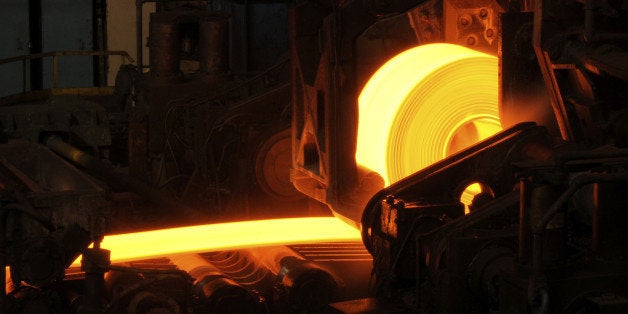
More than two million net new jobs have been created this year in America, a not too shabby number.
Not a single one of them, though, is in manufacturing. That's terrible news, not only for people who want to work in factories, but for the wider economy.
Why, you may ask, is it terrible, when things seem to be humming along quite nicely? Consumer spending is steady, unemployment keeps dropping, and gas prices are low. This economy seems strong enough, the prevailing wisdom suggests, to weather whatever storm is brewing out there in foreign markets. That's one reason why the Federal Reserve may finally raise interest rates next month. Full speed ahead!
But don't sail that dinghy out of the harbor just yet, Gilligan.
There's lots of evidence to suggest that most folks just aren't feeling the economy, despite the positive indicators. Worries about job security and household finances persist, despite the rosy outlook. It's a real, measurable thing, according to recent polling from NPR that found roughly two-thirds of us are routinely anxious about our personal financial situation.
That's because some of the fundamentals really don't inspire a lot of confidence, even for folks finding jobs in the service sector and other parts of the economy. The slowly increasing levels of personal, student, and credit card debt attest to that.
Concurrently, our manufacturing sector is slowing down. Industrial production and capital utilization have both been in decline since July. Factory layoffs have increased during the same time. Industry executives are self-reporting that business contracted significantly last month, and many points along the heavy manufacturing supply chain - like mining and steelmaking - have been hard hit by weak demand and a flood of imports from state-sponsored foreign competition.
China, for instance, is producing way more steel and other commodities than it is now buying internally. The rest of the world is now awash in a flood of artificially cheap steel, which has severely impacted U.S. manufacturers.
Manufacturing matters. And the weaker it gets, the shakier our economic recovery will become.
This slowdown is a problem for all of us. Manufacturing employment in the United States has dropped by a third since 1998, but there are a lot of people dependent on that workforce who aren't counted as manufacturing employees. Think of the warehouse workers, truckers, and contracted factory workers who are classified as temps, and the service jobs that thrive around the economic activity manufacturing generates. What's more, manufacturing jobs pay better than service sector jobs for workers with less than a four-year college degree. And a growing manufacturing base enables more research, development, patents, and innovation.
Simply put: Manufacturing matters. And the weaker it gets, the shakier our economic recovery will become. Anybody remember 2008-2009? We're not done sweating that recession out.
The last time the economy collapsed, it took a combination of massive quantitative easing to spur demand, a historic rescue of the auto industry, and a significant surge in public investment to get domestic manufacturing back on its feet. And the sector still hasn't recovered even half of the jobs it lost during that time.
Now that interest rates have been near zero for years, the Federal Reserve has fewer tools available to help fuel a recovery that might be necessary in the near future.
Putting a lid on the Chinese import surge would be a wise first step on the road to recovery. Second would be ensuring exchange rates are fair and competitive. Third is passing a robust and long-term infrastructure bill. Fourth is reshaping the tax code to promote reshoring of manufacturing jobs and even more domestic capital investment in our factories.
Last, but not least, the American consumer can take matters into our own hands while we holiday shop: Buy and Give American.
Those factories mean more to our economy than most folks will ever know. That's why we've got to keep them going full bore.
Faltering factories are a sign of a slow-burn economic malaise. America won't shake it off until we get serious about saving the manufacturing sector.